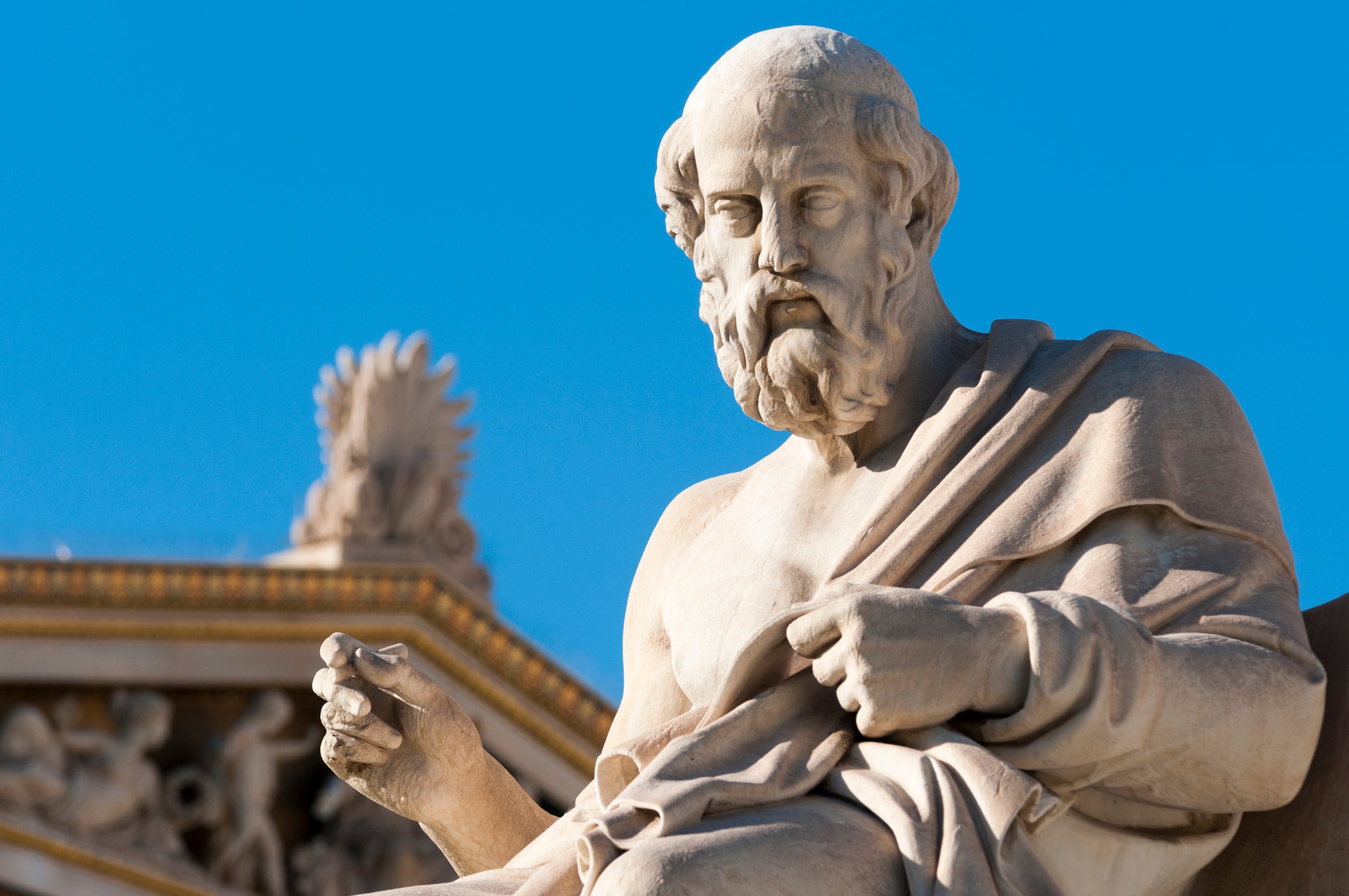Ancient scroll found at Mount Vesuvius reveals details of Plato’s final hours
Scientists use scanners to read about 1,000 words of papyrus scroll buried in AD79 and found in 1750
Your support helps us to tell the story
This election is still a dead heat, according to most polls. In a fight with such wafer-thin margins, we need reporters on the ground talking to the people Trump and Harris are courting. Your support allows us to keep sending journalists to the story.
The Independent is trusted by 27 million Americans from across the entire political spectrum every month. Unlike many other quality news outlets, we choose not to lock you out of our reporting and analysis with paywalls. But quality journalism must still be paid for.
Help us keep bring these critical stories to light. Your support makes all the difference.
A groundbreaking discovery of a papyrus scroll buried in AD79 eruption of Mount Vesuvius may reveal more about the final hours of famous Greek philosopher Plato as well as his burial place.
The scroll, known as the History of the Academy and written by philosopher and poet Philodemus of Gadara, has been unreadable since it was found in 1750, in a villa in Herculaneum, now known as Ercolano in Italy.
Now, a team of researchers has used infrared and X-ray scanners to decipher about 1,000 words.
“It is the oldest history of Greek philosophy in our possession,” said professor Graziano Ranocchia, a papyrologist at the University of Pisa and the project’s lead researcher.
“It is an extraordinary outcome that enriches our understanding of ancient history.”

The text reveals that shortly before his death at 81, Plato had a high fever and was unhappy with a musician from Thrace who was present and playing the flute.
Plato, who was Socrates’s student and Aristotle’s teacher, told the musician she had a “scant sense of rhythm”.
The deciphered words also suggest that Plato was buried in a private garden in the Academy of Athens, the world’s first university, which he founded.
Before this discovery, it was only known that he was buried somewhere on the grounds of the academy.
“We knew Plato was buried at the academy, which was very large, but thanks to the scans we now know he was buried in a garden in a private area, near the sacred shrine to the Muses,” Mr Ranocchia was reported as saying by The Telegraph.
The academy was destroyed by Roman general Sulla 300 years later and its archaeological remains now remain in Akadimia Platonos in Athens.
The text goes on to reveal that Plato was sold into slavery on the island of Aegina as early as 404BC when the Spartans conquered Aegina, or in 399BC immediately after the death of Socrates. Previously, it was believed that Plato was sold around 387BC by Syracuse ruler Dionysius.
Mr Ranocchia said that the work of deciphering the scroll is still in its initial stages and will be completed in 2026.
“For the first time, we have been able to read sequences of hidden letters from the papyri that were enfolded within multiple layers, stuck to each other over the centuries, through an unrolling process using a mechanical technique that disrupted whole fragments of text,” he said.

Join our commenting forum
Join thought-provoking conversations, follow other Independent readers and see their replies
Comments